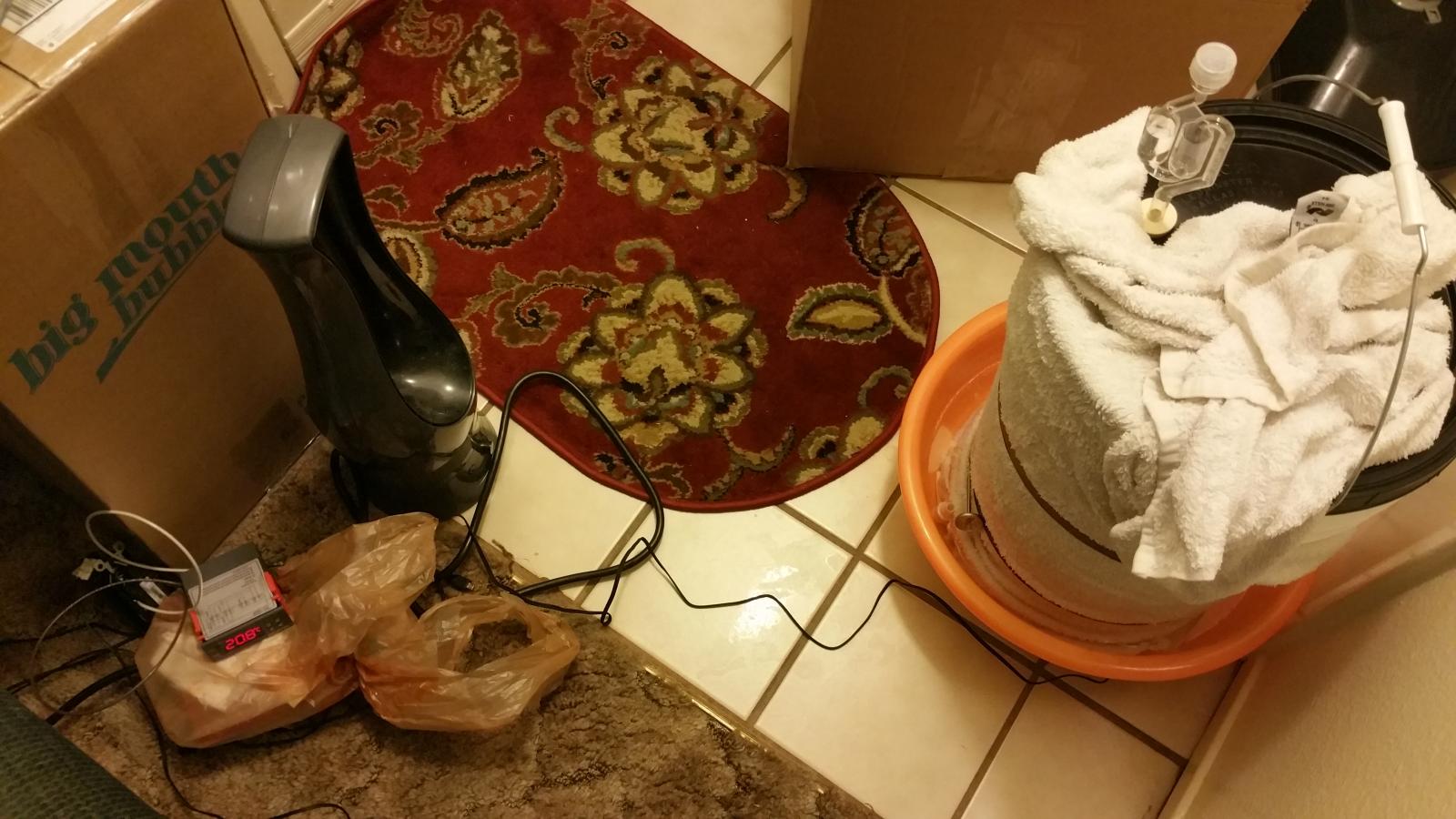Well, after an interesting day...
I had set my porter in the basement overnight. It was just as full as other batches in the car boy...
Recommended the blowoff tube, roommate said let's just see. Go down this morning and yup! Foam everywhere, beer more places...
Took a dremel to an air lock (most places closed today and tubing didn't match the od of the air lock)
...beer blew the stopper after that. Brought it upstairs. Swamp cooler I did.
...should I swap the sanitized water? It's brown now. I figure anything in it is sanitized, but no air tight lid so?
...it's bubbling wild still. I'm new, but by far the most vigorous fermentation ive seen
Temp in apartment was ninety. It's in the ac now. Probably eighty when began in basement.
View attachment 1441671818342.jpg
View attachment 1441671828820.jpg
I had set my porter in the basement overnight. It was just as full as other batches in the car boy...
Recommended the blowoff tube, roommate said let's just see. Go down this morning and yup! Foam everywhere, beer more places...
Took a dremel to an air lock (most places closed today and tubing didn't match the od of the air lock)
...beer blew the stopper after that. Brought it upstairs. Swamp cooler I did.
...should I swap the sanitized water? It's brown now. I figure anything in it is sanitized, but no air tight lid so?
...it's bubbling wild still. I'm new, but by far the most vigorous fermentation ive seen
Temp in apartment was ninety. It's in the ac now. Probably eighty when began in basement.
View attachment 1441671818342.jpg
View attachment 1441671828820.jpg




































![Craft A Brew - Safale S-04 Dry Yeast - Fermentis - English Ale Dry Yeast - For English and American Ales and Hard Apple Ciders - Ingredients for Home Brewing - Beer Making Supplies - [1 Pack]](https://m.media-amazon.com/images/I/41fVGNh6JfL._SL500_.jpg)




















 Taking meticulous notes on each batch.
Taking meticulous notes on each batch.